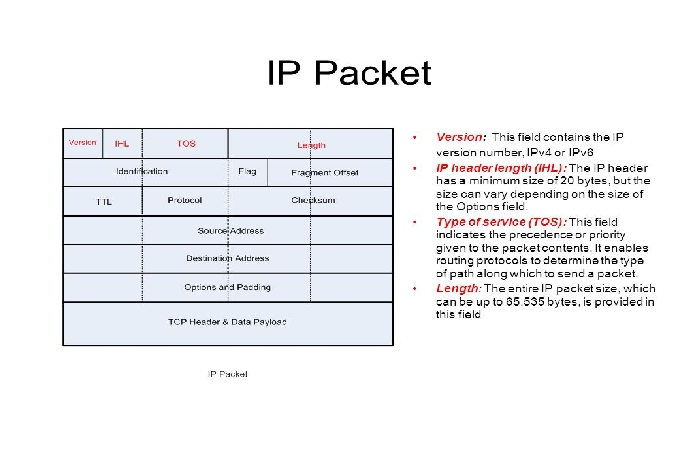Table of Contents
What is Internet Protocol (IP)?
Internet Protocol (IP) is the method or procedure through which facts are sent from one pc to another on the net. Each laptop known as a host on the net has at the least one IP deal with that uniquely identifies it from all different computers.
IP is the defining set of rules that allow the modern internet. It changed into initially described in May 1974 in a paper patrician, “A Protocol for Packet Network Intercommunication,” available by the Institute of Electrical and Electronics Engineers and authored via Vinton Cerf and Robert Kahn.
Additional delivery protocols that enable real conversation among different hosts are at the core of what is typically known as IP. One of the center protocols that run on the pinnacle of IP is the Transmission Control Protocol (TCP); that’s often why IP also refer to as TCP/IP. However, TCP isn’t the most straightforward protocol. Nevertheless, it is a part of IP.
How does IP Routing Paintings?
When information is acquired or sent — including electronic mail or a website — the message is split into chunks called packets. Each packet consists of both the sender’s internet deal and the receiver’s cope. Any packet is despatcher first to a gateway computer aware of a small part of the internet. The gateway pc reads the destination address and forwards the packet to an adjacent gateway that in turn reads the destination cope with and so forth till one gateway acknowledges the packet as belonging to a computer inside its instantaneous community — or domain. That gateway then forwards the packet without delay to the pc whose address is designated.
Because a message divide into several packets, every packet can if essential, send via a unique direction across the net. As a result, packages can arrive in a distinct order than their dispatch. First, the Internet Protocol delivers them. After that, it’s up to every other protocol — the Transmission Control Protocol — to place them again in the proper order.
IP Packets

While IP defines the protocol by using which facts movements across the net, the unit that does the actual affecting is the IP packet.
An IP packet is a bodily parcel or a letter with an envelope indicating address information and the records contained inside.
An IP packet’s envelope refers to it as the header. The packet header provides the facts needed to course the packet to its vacation spot. An IP packet shot is up to 24 bytes long and consists of the supply IP deal with, the destination IP cope with and information about the scale of the entire packet.
The critical part of an IP packet is the data aspect, which could vary in size. Data internal an IP packet is the content material this is being transmitted.
What is an IP Deal With?
IP affords mechanisms that enable different systems to connect to transfer data. Identifying every device in an IP community is helped with an IP address.
Similar to how a road deal identifies a domestic or business location, an IP address provides an address that classifies an exact machine so records may be sent to it or received from it.
IP copes typically assign through the DHCP (Dynamic Host Configuration Protocol). DHCP may run at a web service issuer, transferring public IP cope we A public IP deal with is one that is on hand thru the public internet.
A local IP address may be generated via DHCP walking on a nearby community router, imparting a cope that can most effectively access by users at the identical local place community.
Differences among IPv4 and IPv6
The maximum extensively used model of IP for most of the internet’s life has been Internet Protocol Version four (IPv4).
IPv4 affords a 32-bit IP addressing device that has four sections. For instance, a pattern IPv4 deal with may appear like 192.168.Zero.1, which coincidentally is likewise typically the default IPv4 cope with for a purchaser router. IPv4 supports a total of four 294,967,296 addresses.
A key gain of IPv4 is its ease of deployment and ubiquity, so it’s far the default protocol. On the other hand, a drawback of IPv4 is the restricted cope with space and trouble customarily referred to as IPv4 cope with exhaustion. In addition, there aren’t enough IPv4 addresses available for all IP use cases. For example, since 2011, IANA (Internet Assigned Numbers Authority) hasn’t had any new IPv4 address blocks to allocate. Also, regional Internet Registries (RIRs) have had limited capability to offer new public IPv4 addresses.
In assessment, IPv6 defines a 128-bit cope with the area, which gives notably extra space than IPv4, with 340 trillion IP addresses. An IPv6 address has eight sections. The textual content form of the IPv6 cope with is XXXX:XXXX:XXXX:XXXX:XXXX:XXXX:XXXX: XXXX, where every x is a hexadecimal digit, representing 4 bits.
The significant availability of address space is the number one gain of IPv6 and its most apparent impact. The challenges of IPv6, however, are that it is miles complex because of its massive deal with space and is frequently difficult for network administrators to display and manipulate.
IP Community Protocols
IP is a connectionless protocol; there may be no persevering with the connection between the give up points that are speaking. Each packet that travels via the net deal has an independent unit of records related to another data division. The packages reassemble in the correct order due to TCP, the relationship-oriented protocol that maintains a message’s packet collection.
In the OSI version (Open Systems Interconnection), IP is in layer three, the networking layer.
There are several commonly used Community Protocols that run on top of IP, along with:
- TCP. Transmission Control Protocol enables the flow of information across IP cope with connections.
- UDP. User Datagram Protocol provides a way to transfer the low-latency process verbal exchange extensively used for DNS lookup and voice over Internet Protocol.
- FTP. File Transfer Protocol is a specification this is reason-constructed for getting access to, managing, loading, copying and deleting documents across related IP hosts.
- HTTP. Hypertext Transfer Protocol is the specification that allows the modern web. HTTP enables websites and internet browsers to view content. It usually runs over port eighty.
- HTTPS. Hypertext Transfer Protocol Secure is HTTP that runs with encryption through Secure Sockets Layer or Transport Layer Security. HTTPS usually serve over port 443.
Also Read: What is FTP (File Transfer Protocol)? – Paintings, Vital, and More

